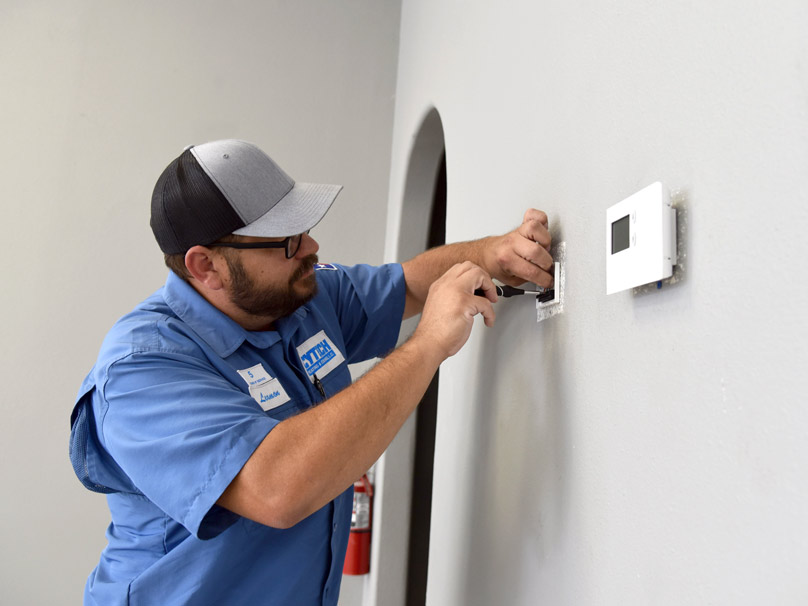Modern homes are well sealed to keep heating and cooling indoors. While this improves energy efficiency, inadequate fresh air, indoor contaminants and nonstop recirculation can lead to problems.
Don’t worry, though, because Cytech Heating & Cooling L.C. can help you have an energy-efficient home that’s also comfortable. Our services include an air quality audit, air duct cleaning and products to help improve indoor air quality in McAllen, Texas.
Call us at 956-553-3265 today to start refreshing your home’s indoor air quality.
We offer:
- Inonizers
- HEPA grade filters
- Ultraviolet Lights and UV components
- HEPA bypass filtration
- Filter Media
- Once a Year Filters (4” filters that typically only need to be changed once a year)
- Carbon filtration

Signs Your Home Deals With Poor Indoor Air Quality
Is your home healthy? It may not be as clean as you think. Pollution can be two to five times more concentrated indoors than outdoors, as reported by the U.S. Environmental Protection Agency.
Indoor air pollutants drifting in your home’s air could induce headaches and allergy flareups. And mold and mildew can cause a variety of health problems.
Health Problems
While these symptoms can be caused by other issues, they can be indicative your home has indoor air quality (IAQ) problems. This is especially true if you feel better while you’re away from home.
- Dry eyes, nose, throat or skin
- Headaches and sinus irritation
- Fatigue
- Allergies or asthma symptoms that are more intense than usual
- Coughing and sneezing
- Dizziness or nausea
Environmental Problems
A well-worn heating and cooling system will sometimes be a contributing factor in indoor air quality problems, particularly if it’s struggling to filter air, control humidity or keep temperatures consistent.
Here are a few other signs you might need to purify your indoor air:
- Too much static or mold growth
- Large amounts of dust
- Stuffy or musty odors
How Can I Stop Indoor Air Quality Problems?

Combating indoor air quality problems can be fairly easy with just 10 simple tips:
- Plan an indoor air quality audit with Cytech Heating & Cooling L.C.. We’ll evaluate areas that affect air quality, like humidity, carbon monoxide and volatile organic compounds (VOCs). Then we’ll go over whatever concerns we come across and how you can fix them.
- Clean regularly to reduce dust mites, which can worsen allergies and asthma.
- Keep your home free of secondhand smoke.
- Get a whole-home filtration system to get rid of odors, instead of masking them with air fresheners or scented candles. The contaminants include chemicals that can cause headaches or aggravate respiratory illness.
- Vent gas-burning appliances, including stoves and water heaters, to the outdoors.
- Keep your home’s humidity levels in check with a humidifier or dehumidifier, depending on your needs. Set humidity under 50% to hinder mold and mildew spores.
- Test your home for radon. Long-term exposure to this invisible radioactive gas is the number one cause of lung cancer for nonsmokers, according to the EPA. You can buy a radon test kit online or get in contact with your state radon program for info on discounted or free kits.
- Implement a ventilation system to exchange contaminated indoor air with fresh outside air.
- Look for natural cleaning and painting substances that are low in or free of VOCs. High levels of VOCs can irritate symptoms for family members with respiratory conditions.
- Place carbon monoxide detectors close to bedrooms.
Start Cleaning Your Air Today with Cytech Heating & Cooling L.C.
With a full roster of NATE-certified professionals and indoor air quality solutions, Cytech Heating & Cooling L.C. can help your family breathe much easier. Call us at 956-553-3265 or contact us online today to begin.
